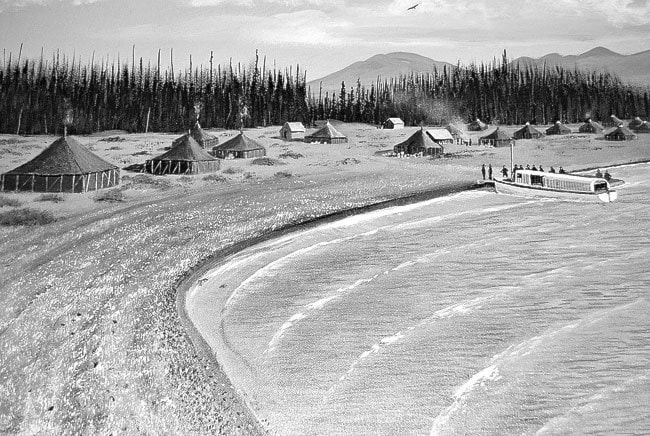In the 1930s and ‘40s Cpl. G.I. Cameron was the law and everything else in the community of Fort Selkirk.
As the only Mountie for miles, Cameron did whatever he could to make the community better.
He was responsible for law enforcement, including game laws; he met all the planes and sternwheelers; he distributed medicines and helped dig graves for burials.
G.I. Cameron, or Cam as he was known, was born in Ontario at the turn of the century. After the First World War, he joined the Royal Canadian Mounted Police.
He came to the Yukon in 1925 at the age of 25 and was initially stationed in Dawson to monitor the gold fields.
Cameron was at Sulphur Creek in 1927, when he became involved in a situation which would do credit to the imagination of Robert Service or Jack London, according to a transcript of the Yukon legislature from November 9, 1987.
“On a freezing January night, he and two other officers were called out to deal with a miner who had gone mad and was firing his weapon at anything that presented a target.
“A shoot-out ensued, and the Royal Canadian Mounted Police were pinned down. At one point the crazy man ran towards Cam in the night, fell, disappeared from sight and suddenly reappeared and pointed his rifle directly at him.
“The miner pulled the trigger, and there was a loud explosion. However, that explosion was not a bullet putting an end to the life of the young Royal Canadian Mounted Police officer.
“Instead it was the miner’s rifle that had become packed with snow and fell, exploding. After another day of exchanged gunfire, the deranged man finally died.”
While in Dawson Cameron met and fell in love with a woman named Martha, whom he asked to become his wife.
At that time Mounties could not marry without the approval of their commanding officer.
After three years of trying to get that approval, Cameron chose his love over his career and bought his discharge from the force.
However in 1934, when the rules regarding marriage were relaxed, Cameron rejoined the RCMP and was stationed in Fort Selkirk.
From 1935 to 1949, he was the only RCMP officer there, which also made him the government.
He was often away on extended patrols, travelling by boat in summer and by dog team in winter.
He patrolled up and down the Yukon River as well as up the Pelly and South MacMillan rivers.
He visited people living in remote areas to deliver their mail, doctor their sick, and bury their dead.
During Cameron’s absences, his wife Martha looked after the detachment by cutting the firewood, maintaining the airstrip behind the town for White Pass Airways and occasionally filling in for the telegraph operator.
G.I., Martha and their daughter, Ione, were respected members of the community.
Their home was always open to visitors and travellers who needed a place to stay. Cameron took a number of photographs and movies showing life at Fort Selkirk in the late 1930s and 1940s.
They give us an invaluable picture of daily life in the river settlement during the sternwheeler era.
In 1949, G.I. retired from the force with his family and moved to Whitehorse where he worked in different capacities for the territorial government.
Cameron’s daughter, Ione Christensen, was the former Yukon Senator.
This column is provided by the MacBride Museum of Yukon History. Each week it will explore a different morsel of Yukon’s modern history. For more information, or to comment on anything in this column e-mail lchalykoff@macbridemuseum.com.
